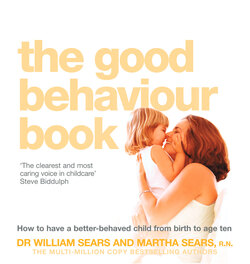Читать книгу The Good Behaviour Book - Марта Сирс - Страница 38
building better-behaved brains
ОглавлениеThe developing brain of an infant resembles miles of tangled electrical wire called neurons. At the end of each neuron tiny filaments branch out to make connections with other neurons, forming pathways. This is one of the ways the brain develops patterns of association: habits, and ways of acting and thinking; in other words organization. Attachment parenting creates a behavioural equilibrium in a child that not only organizes a child’s physiology but her psychological development as well. In a nutshell, attachment parenting helps the developing brain make the right connections.
The unconnected child, however, is at risk for developing disorganized neurological pathways, especially if that infant has come wired with even more than her average share of disorganized pathways. This child is at risk of developing behavioural problems later on, namely hyperactivity, distractibility, and impulsivity – features of one of the most increasingly prevalent “diseases” in childhood and now adulthood – attention deficit/hyperactivity disorder (ADHD). A person’s brain grows more in the first three years than anytime in life. Could the level of nurturing during those formative years affect the way the behavioural pathways in the brain become organized? We believe it does, and we also believe that research will soon confirm that many later child and adult behavioural problems are really preventable diseases of early disorganization. (See related topic, “Disciplining the Hyperactive Child”.)
Attachment parenting encourages obedience. The real payoff of attachment parenting is obedience. This style of parenting, besides opening up parents to the needs of their baby, also opens up the baby to the wishes of the parent. The universal complaint of parents is “My child won’t obey”. How compliant your child is depends upon his temperament, which you can’t control, and the depth of your parent-child connection, which you can influence. Because your minds mesh, the connected child is more open to accept your perspective and switch from his mind-set to yours, to listen to you instead of being closed to you. The connected child trusts that parents know best.The attached child wants to please.
Even the iron-willed child bends to the will of the mother or father who operate on the parenting principle “The stronger my child’s will, the stronger must be my connection.” It is this connection that gives parents confidence. Wanting to please and trying to obey are the behavioural trademarks of the connected child. Jenny, the mother of a high-need baby, who is now a strong-willed four-year-old volunteered: “Initially attachment parenting took more energy and was less convenient. Now caring for Jonathan is easier because discipline flows naturally between us. I’m finally beginning to cash in on my investment.”
For more benefits of attachment parenting and discipline, see: Chapter 3, “Understanding Ones, Twos, and Threes”; Chapter 7, “Self-Esteem: The Foundation of Good Behaviour”; Chapter 8, “Helping Your Child Express Feelings”; and the special feature “Inner Peace”.
* We discuss each of these attachment tips in greater detail in The Baby Rook (Thorsons, 2005). We treat them here in briefer form to show how they lay the foundation for discipline.
